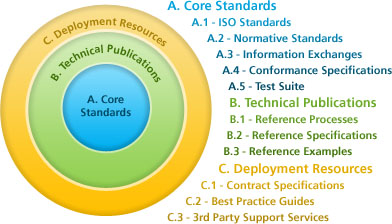BIM, an acronym for “Building Information Modeling”, is a process that assists the collaboration of planning, designing, and construction of a building with the help of a 3-D model. This has proven to be the most advantageous to the stakeholders and AEC (Architecture, Engineering &Construction) Professionals regarding the building to which BIM is to be applied.
Turning towards the standardization of BIM globally, ISO 19650 provides the guidelines for managing building information modeling.
What is ISO 19650?
ISO 19650 is a standard that manages information over the life span of an asset using Building Information Modeling (BIM). It ensures the proper implementation of the BIM process worldwide.
National BIM Standards
Standards are developed at the national level so that BIM is effectively and efficiently applied to the building under construction, also keeping in mind that rules under ISO 19650 are not violated. BIM standards can help build models and deliver the products ensuring their high performance and facility functionality throughout their life. The BIM standard developed at the national level of some countries has been discussed here.
The United States of America
In America, The National BIM Standard-United States® (NBIMS-US™) aids the provision of consensus-based standards by referencing the existing standards to deliver the best business practices for the entire built environment. Its scope revolves around the concept of ever-increasing levels of importance, with International Standards, i.e. ISO16950, at the center. The complete hierarchy is shown in the diagram below.

United Kingdom
In the United Kingdom, the standardization of the BIM process is done by PAS 1192. This specifies the requirements for the application of BIM in the UK correctly and in accordance with the laws and regulations applicable in the UK. It is the national code used in the United Kingdom regarding Building Information Modeling.
Australia
The guidelines for BIM implementation in Australia are given by NATSPEC. NATSPEC supports the Australian BIM initiatives through the National BIM Portal. It plays the role of a knowledge hub for the Australasian BIM Advisory Board (ABAB) and ACIF-APCC Project Team Integration (PTI) and BIM initiative. NATSPEC believes that BIM will provide improved methods of design, construction, and planning for the industry resulting in increased efficiency and quality.
Canada
In Canada, CanBIM Protocol regulates the proper implementation of the BIM process. It has developed the guidelines through which the AEC Professionals can efficiently apply BIM to a building, ensuring increased quality.
Norway
Statsbygg Building Information Modeling Manual – version 1.2.1 is the manual produced in Norway which describes the aspects to be kept in mind while implementing BIM in a building. SBM 1.2.1 contains the generic requirements for Building Information Modeling (BIM) in the industry of Norway. It surely helps the Norwegian AEC Professionals in applying BIM efficiently, and not violating the International Standards.
Hong Kong
HKIBIM – BIM Project Specification provides guidelines for the efficient implementation of BIM processes in Hong Kong. It upholds the recognition and interest and in Building Information Management. It stimulates general awareness and efforts in the community towards the advancements of the objects and issues thereof.
Conclusion
The national codes about BIM assist professionals to apply BIM efficiently and following international standards. These codes help in improving design methods, construction planning, and sustainability of buildings. The use of consistent BIM standards improves the collaboration between the teams and increases the project quality and efficiency.





